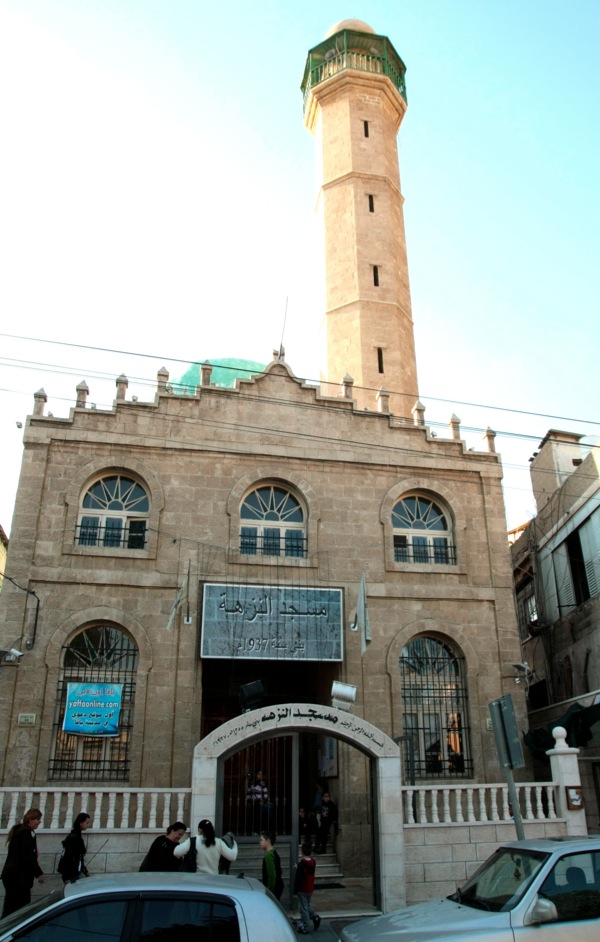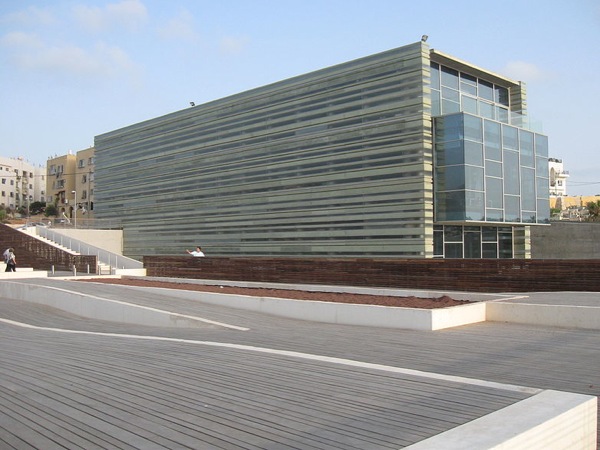Moving from Tel Aviv to Jaffa turned out to be about much more than lower rent and proximity to the sea. In a city plagued by ethnic, national and socio-economic divisions, there is no such thing as an apolitical decision that involves real estate
I moved to a mixed Arab-Jewish building in Jaffa last spring, a refugee from the astronomical rents in Tel Aviv. For more than one thousand shekels less than I paid for my previous apartment in Tel Aviv, which was an oppressively small box on a noisy street, I rented a spacious, sun-splashed space in Jaffa, with a balcony shaded by a tree, windows that open in three different directions and a breeze from the sea. The flea market is two minutes away, the local grocery shops and restaurants are excellent, and there are some serious art galleries down in the restored fishing port.
When I went to sign the contract at the home of my new landlord, a secular Ashkenazi man with a slow walk and an asthmatic wheeze who was born in Tel Aviv more than 70 years ago, he asked me why I wanted to move to Jaffa. An odd question, I thought. Did he not think his apartment was a suitable place to live? Since my financial considerations were none of his business, I said that I wanted to live closer to the sea and that I had friends in Jaffa.
“Jewish friends?” he asked.
“Yes,” I answered. “Jewish.”
Looking at me approvingly, he said, “It’s good that educated young people like you are moving to Jaffa.”
“Why?” I asked.
“So that the Arabs won’t control Jaffa,” he said.
Later I heard from Yossi, the head of the building committee, that my landlord had taken him aside and promised that he would never rent to Arabs. “Your landlord thought I was a racist just like him,” said Yossi, who happens to sit on the board of a left-wing NGO with a bi-national agenda.
While I was abroad the following month, my landlord came over and nailed a mezuzah on my front door frame – without asking my permission. Clearly, it was important for him that people identified his property as a ‘Jewish’ apartment.
Meanwhile, friends from Tel Aviv reacted strangely when they visited me. Glancing askance at the calligraphic shahada over the door of the family next door, they asked if I felt safe living in the building. “Do you talk to your neighbours?” they asked.
“Of course I talk to my neighbours!” I answered indignantly. And I do. Samira, who works at a restaurant, feeds me cookies and gentle smiles; and Khalil, who is a garage mechanic, always has a cousin who can fix whatever breaks down. I even talk to Abed, the perpetually unsmiling drug dealer who lives on the ground floor, although he rarely answers me.
But we do not socialize. We are neighbours and acquaintances, but not friends. And the reasons are related to class – that other political issue. When my friend Issa came to visit, he, a polyglot Christian Palestinian-Israeli who is studying for a graduate degree at Tel Aviv University, laughed and said, “You certainly chose to be a real bohemian, didn’t you?” He would not dream of living in my dirty, un-renovated old building with its working-class tenants. Or, as my friend Nizo, a Palestinian refugee living in Canada, put it jokingly, after hearing my description of Abed and his family, “Habibti, you can have those Palestinians. It’s okay, we have plenty.”
It was only after I moved to Jaffa that I made this discovery: in general, upper middle-class Arabs who work in the professions (academia, law, journalism, medicine) do not live there. There are a few actors and intellectuals that gather at Café Yafa, and a small, predominantly Christian middle class that sends its children to the private schools run by the Catholic, Orthodox and Protestant churches. But mostly, the intellectual and professional Palestinian-Israelis live in Neve Shalom, Nazareth, Haifa and Ramleh – or in the splashy new suburb built above Um El Fahm. The Palestinian-Israeli celebrities often live in Tel Aviv – as do actors Clara Khoury and Yousef Sweid.
The Arabs of Jaffa are mostly poor – impoverished, even. Some of them are migrant workers from the villages in the Galilee; others are former army informants (collaborators) from the occupied territories; or maybe Egyptians who came over to work in the 1990s, then married local women and stayed; and a few – a very few – have lived there since before 1948. They are, as a journalist from Nazareth told me, very disconnected from the Arabs in the rest of Israel. There are no Arabic-language bookshops or lending-libraries in Jaffa, unless you count the small collection of political books at Yafa Cafe. There is no cinema that screens Arabic films; no major Arab cultural events; and no local radio station in Arabic. The Alhambra Theater on Jerusalem Boulevard, where the great Egyptian singer Oum Kulthoum appeared in the late 1930s, was recently restored to its Bauhaus glory and is now a Scientology center.
Lately, National-Religious (religious right-wing) Jews have been settling in Jaffa with the stated intention of ‘Judaizing’ it. Boys study for a year between high school and army service at yeshivas that were established by rabbis from West Bank settlements. Religious girls, exempt from regular army service, perform a year of national service at the local public high school, teaching Jewish holidays and customs to a student body that is 45 percent Arab.
On several occasions, these teenage national-religious youth have held loud demonstrations in mixed Jaffa neighbourhoods on Saturdays. As you can see in the video below, they wave flags, sing nationalist songs and dance in circles on the streets – on Shabbat. Which I find a bit strange, because in my religious youth we were taught that the Sabbath was a day for peaceful contemplation and harmony. Also, it seems pretty clear that they have not come to introduce themselves to the neighbours and invite them over for coffee.
[youtube]http://www.youtube.com/watch?v=ggwn15U8x1Y[/youtube]
Two weeks ago, a large group of those teens, who had a police license to demonstrate, gathered in front of a mosque on Jerusalem Boulevard just as evening prayers ended. According to this report (HEB) on the Maariv-owned website NRG, the teens shouted slogans that included, according to eyewitnesses quoted in the article, “Death to Arabs” and “Mohamed is a pig.” The police had to separate the Jewish and Arab teenagers; and Sami Abu Shehadah, a community organizer, said the incident could easily have ended in “a massacre.”

Jaffa radicalized me, in a way. I think about politics when I walk through Ajami, the neighbourhood that was, until recently, an Arab ghetto. Over the past few years Ajami has been going through a gentrification process that involved pushing the Arab families out of their neglected old homes in order to make way for the construction of multi-million dollar residences with underground parking.
Rifaat “Jimmy” Turk, a community organizer who was the first Arab to play in Israel’s national soccer team back in the 1970s, rages as he points at the new playground and park. “I lived here for 50 years and the city never paved a centimeter of road. I devoted most of my adult life to co-existence. When I sat on the city council I used to beg them to have the garbage collected regularly and for a playground to be built for the kids, but they always said there was no budget, and I believed them. Then the Jews moved in and suddenly there was a budget!” Two years ago, Jimmy’s 72 year-old widowed mother received an eviction notice for the house she had moved into as a 16 year-old bride, and in which she had raised nine children.
I think about politics when I look at the crumbling and neglected Muslim cemetery, right next to the architecturally striking new building that houses the Peres Center for Peace. And I think about it when I see that the section of Yehuda Hayamit Street that runs past the Army Radio building was completely repaved in less than two months, while the road’s continuation, which runs through residential blocks occupied mostly by Arabs, was left dug up for 9 months, preventing people from walking on the sidewalks. That ended up bankrupting small business owners – like the barber who had had his shop there for more than 40 years.
I think about politics when I see riot control forces (Yasam) roaming around Jaffa, randomly stopping local Arabs and demanding to see their identity cards.
And I think about politics when I read that the principal of the local public high school forbade Arab students, who made up 45 percent of the student body, to speak Arabic between themselves in the classroom, even though Arabic is one of Israel’s two official languages. Meanwhile, the students from the former Soviet Union were not forbidden to speak Russian.
Jaffa is an interesting and cool place to live. It reminds me a bit of New York City’s Harlem 10 years ago, when it was an edgy place for bohemian whites to live – and a ghetto that most blacks wanted to leave. I just did not expect to feel like a colonizer for having moved 15 minutes’ walk from Tel Aviv. But, I do.
This post was translated into Hebrew by Ronen Wodlinguer and published on the Project Democracy blog, as well as on Ha’Okets.


